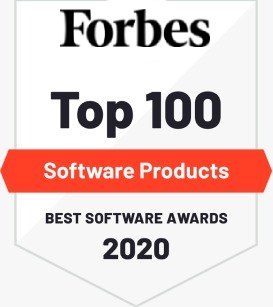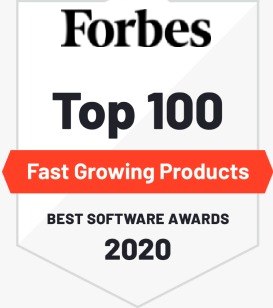Section 1 : Part 1 Introduction
|
|
Lecture 1 | About Certification |
Section 2 : Intro to Data and Data Science The Different Data Science Fi
|
|
Lecture 1 | Why Are There So Many Business and Data Science Bu | 00:05:22 Duration |
|
|
Lecture 2 | Analysis vs Analytics | 00:03:51 Duration |
|
|
Lecture 3 | Intro to Business Analytics Data Analytics andData | 00:08:26 Duration |
|
|
Lecture 4 | Adding Business Intelligence (BI), Machine Learnin | 00:09:31 Duration |
|
|
Lecture 5 | An Overview of our Data Science Infographic | 00:04:03 Duration |
Section 3 : Intro to Data and Data Science The Relationship between Diff
|
|
Lecture 1 | When are Traditional data, Big Data, BI, Tradition | 00:07:19 Duration |
Section 4 : Intro to Data and Data Science What is the Purpose of each D
|
|
Lecture 1 | Why do we Need each of these Disciplines | 00:04:45 Duration |
Section 5 : Intro to Data and Data Science Common Data Science Technique
|
|
Lecture 1 | Traditional Data- Techniques | 00:08:14 Duration |
|
|
Lecture 2 | Traditional Data- Real-life Examples | 00:01:45 Duration |
|
|
Lecture 3 | Big Data- Techniques | 00:04:26 Duration |
|
|
Lecture 4 | Big Data- Real-life Examples | 00:01:32 Duration |
|
|
Lecture 5 | Business Intelligence (BI)- Techniques | 00:06:46 Duration |
|
|
Lecture 6 | Business Intelligence (BI)- Real-life Examples | 00:01:43 Duration |
|
|
Lecture 7 | Traditional Methods- Techniques | 00:09:08 Duration |
|
|
Lecture 8 | Traditional Methods- Real-life Examples | 00:02:46 Duration |
|
|
Lecture 9 | Machine Learning (ML)- Techniques | 00:06:55 Duration |
|
|
Lecture 10 | Machine Learning (ML)- Types of Machine Learning | 00:08:13 Duration |
|
|
Lecture 11 | Machine Learning (ML)- Real-life Examples | 00:02:12 Duration |
Section 6 : Intro to Data and Data Science Common Data Science Tools
|
|
Lecture 1 | Programming Languages & Software Employed in Data | 00:05:51 Duration |
Section 7 : Intro to Data and Data Science Data Science Career Paths
|
|
Lecture 1 | Data Science Job Positions- What do they Involve a | 00:03:29 Duration |
Section 8 : Intro to Data and Data Science Dispelling Common Misconcepti
|
|
Lecture 1 | Dispelling common Misconceptions | 00:04:10 Duration |
Section 9 : Part 2 Statistics PopulationandSample
|
|
Lecture 1 | Population vs sample | 00:04:02 Duration |
Section 10 : Statistics Descriptive Statistics
Section 11 : Statistics Practical ExampleDescriptive Statistics
|
|
Lecture 1 | Practical Example | |
|
|
Lecture 2 | Practical Example Exercise |
Section 12 : StatisticsInferentialStatisticsFundamentals
|
|
Lecture 1 | Introduction | 00:01:01 Duration |
|
|
Lecture 2 | What is a Distribution | 00:04:33 Duration |
|
|
Lecture 3 | The Normal Distribution | 00:03:54 Duration |
|
|
Lecture 4 | The Standard Normal Distribution | 00:03:31 Duration |
|
|
Lecture 5 | The Standard Normal Distribution Exercise | |
|
|
Lecture 6 | Central Limit Theorem | 00:04:20 Duration |
|
|
Lecture 7 | Standard error | 00:01:27 Duration |
|
|
Lecture 8 | Estimators and Estimates | 00:03:08 Duration |
Section 13 : StatisticsInferentialStatisticsConfidenceIntervals
Section 14 : Statistics Practical ExampleInferentialStatistics
|
|
Lecture 1 | Practical Example- Inferential Statistics | 00:10:06 Duration |
|
|
Lecture 2 | Practical ExampleInferentialStatisticsExercise |
Section 15 : StatisticsHypothesisTesting
|
|
Lecture 1 | The Null vs Alternative Hypothesis | 00:05:52 Duration |
|
|
Lecture 2 | Further ReadingonNullandAlternativeHypothesis | |
|
|
Lecture 3 | Rejection Region and Significance Level | 00:07:06 Duration |
|
|
Lecture 4 | Type I Error and Type II Error | 00:04:14 Duration |
|
|
Lecture 5 | Test for the Mean. Population Variance Known | 00:06:35 Duration |
|
|
Lecture 6 | Test for theMeanPopulationVarianceKnownExercise | |
|
|
Lecture 7 | p-value | 00:04:49 Duration |
|
|
Lecture 8 | Remove - INTRODUCTION TO BRAINMEASURES PROCTOR SYS | |
|
|
Lecture 9 | Test for the Mean.PopulationVarianceUnknownExercis | |
|
|
Lecture 10 | Test for the Mean. Dependent Samples | 00:05:18 Duration |
|
|
Lecture 11 | Test for the Mean. Dependent SamplesExercise | |
|
|
Lecture 12 | Test for the mean. Independent samples (Part 1) | 00:04:22 Duration |
|
|
Lecture 13 | Test for the mean.Independentsamples(Part 1).Exerc | |
|
|
Lecture 14 | Test for the mean. Independent samples (Part 2) | 00:04:27 Duration |
|
|
Lecture 15 | Test for the mean.Independentsamples(Part 2) |
Section 16 : Statistics Practical ExampleHypothesisTesting
|
|
Lecture 1 | Practical Example- Hypothesis Testing | 00:07:16 Duration |
|
|
Lecture 2 | Practical ExampleHypothesisTestingExercise |
Section 17 : Part 3 RelationalDatabaseTheory&IntroductiontoSQL
|
|
Lecture 1 | Why use SQL | 00:03:18 Duration |
|
|
Lecture 2 | Why use MySQL | 00:01:57 Duration |
|
|
Lecture 3 | Introducing Databases | 00:04:44 Duration |
|
|
Lecture 4 | Relational Database Fundamentals | 00:04:51 Duration |
|
|
Lecture 5 | Comparing Databases and Spreadsheets | 00:07:05 Duration |
|
|
Lecture 6 | Important Database Terminology | 00:04:17 Duration |
|
|
Lecture 7 | The Concept of Relational Schemas- Primary Key | |
|
|
Lecture 8 | The Concept of Relational Schemas- Foreign Key | 00:04:59 Duration |
|
|
Lecture 9 | The Concept of Relational Schemas- Unique Key and | 00:03:08 Duration |
|
|
Lecture 10 | The Concept of Relational Schemas- Relationships | 00:04:39 Duration |
Section 18 : SQLInstallandgettoknowMySQL
|
|
Lecture 1 | Installing MySQL Workbench and Server | 00:10:49 Duration |
|
|
Lecture 2 | Installing Visual C | |
|
|
Lecture 3 | Installing MySQL on macOS and Unixsystems | |
|
|
Lecture 4 | The Client-Server Model | |
|
|
Lecture 5 | Linking GUI with the MySQL Server | 00:02:34 Duration |
|
|
Lecture 6 | Read me!! | |
|
|
Lecture 7 | Creating a New User and a New Connection to it | 00:06:18 Duration |
|
|
Lecture 8 | Familiarize Yourself with the MySQL Interface | 00:05:09 Duration |
Section 19 : SQL Best SQLPractices
|
|
Lecture 1 | Coding Tips and Best Practices - I. | 00:05:34 Duration |
|
|
Lecture 2 | Coding Tips and Best Practices - II | 00:04:12 Duration |
|
|
Lecture 3 | Remove - INTRODUCTION TO BRAINMEASURES PROCTOR SYS |
Section 20 : SQL Loading the employeesDatabase
|
|
Lecture 1 | Loading the 'employees' Database |
Section 21 : SQL PracticalApplicationoftheSQLSELECTStatement
Section 22 : SQL ExpandingonMySQLAggregateFunctions
|
|
Lecture 1 | Applying COUNT( | 00:04:01 Duration |
|
|
Lecture 2 | Applying COUNT() - Exercise | |
|
|
Lecture 3 | Applying COUNT() - Solution | |
|
|
Lecture 4 | Applying SUM() | 00:01:31 Duration |
|
|
Lecture 5 | Applying SUM() - Exercise | |
|
|
Lecture 6 | Applying SUM() - Solution | |
|
|
Lecture 7 | MIN() and MAX() | 00:01:15 Duration |
|
|
Lecture 8 | MIN() and MAX() - Exercise | |
|
|
Lecture 9 | MIN() and MAX() - Solution | |
|
|
Lecture 10 | Applying AVG() | 00:01:58 Duration |
|
|
Lecture 11 | Applying AVG() - Exercise | |
|
|
Lecture 12 | Applying AVG() - Solution | |
|
|
Lecture 13 | Rounding Numbers with ROUND() | 00:02:06 Duration |
|
|
Lecture 14 | Rounding Numbers with ROUND() - Exercise | |
|
|
Lecture 15 | Rounding Numbers with ROUND() Solution |
Section 23 : SQL SQL JOINs
Section 24 : SQL SQL Subqueries
|
|
Lecture 1 | SQL Subqueries with IN Embedded Inside WHERE | 00:04:32 Duration |
|
|
Lecture 2 | SQL Subqueries with INEmbeddedInsideWHERE Exercise | |
|
|
Lecture 3 | SQL Subqueries with IN Embedded InsideWHERE Soluti | |
|
|
Lecture 4 | SQL Subqueries with EXISTS-NOT EXISTS Embedded Ins | 00:03:43 Duration |
|
|
Lecture 5 | SQL Subqueries with EXISTSNOTEXISTSEmbedded Inside | |
|
|
Lecture 6 | SQL Subqueries with EXISTSNOTEXISTSEmbedded Insid | |
|
|
Lecture 7 | SQL Subqueries Nested in SELECT and FROM | 00:07:57 Duration |
|
|
Lecture 8 | SQL Subqueries Embedded inSELECT andFROM Exercise | |
|
|
Lecture 9 | SQL Subqueries Embedded inSELECT andFROM Exercise | |
|
|
Lecture 10 | SQL SubqueriesNestedinSELECTandFROM Solution 2 |
Section 25 : SQL Stored Routines
Section 26 : SQL The CASE Statement
|
|
Lecture 1 | The SQL CASE Statement | 00:05:57 Duration |
|
|
Lecture 2 | The SQL CASE Statement Exercise 1 | |
|
|
Lecture 3 | THE SQL CASE Statement - Solution 1 | |
|
|
Lecture 4 | THE SQL CASE Statement - Exercise 2 | |
|
|
Lecture 5 | THE SQL CASE Statement - Solution 2 | |
|
|
Lecture 6 | THE SQL CASE Statement Exercise 3 | |
|
|
Lecture 7 | THE SQL CASE Statement - Solution 3 |
Section 27 : Part 4 Introduction to Tableau
|
|
Lecture 1 | Why Use Tableau- Make Your Data Make an Impact | 00:04:23 Duration |
|
|
Lecture 2 | Let's Download Tableau Public | 00:02:03 Duration |
|
|
Lecture 3 | Connecting Data in Tableau | 00:01:04 Duration |
|
|
Lecture 4 | Remove - INTRODUCTION TO BRAINMEASURES PROCTOR SYS | |
|
|
Lecture 5 | Let's Create our first Chart in Tableau! | 00:07:12 Duration |
Section 28 : Tableau Tableau functionalities
|
|
Lecture 1 | Duplicating a Sheet | 00:02:49 Duration |
|
|
Lecture 2 | Creating a Table | 00:04:49 Duration |
|
|
Lecture 3 | Creating Custom Fields | 00:02:29 Duration |
|
|
Lecture 4 | Creating a Custom Field and Adding Calculations to | 00:03:41 Duration |
|
|
Lecture 5 | Adding Totals and Subtotals | 00:02:03 Duration |
|
|
Lecture 6 | Adding a Custom Calculation | 00:03:12 Duration |
|
|
Lecture 7 | Inserting a Filter | 00:02:21 Duration |
|
|
Lecture 8 | Working with Joins in Tableau | 00:04:33 Duration |
|
|
Lecture 9 | Working with Joins in Tableau | 00:04:33 Duration |
Section 29 : Tableau The Tableau Exercise
|
|
Lecture 1 | Introduction to the Exercise | 00:02:06 Duration |
|
|
Lecture 2 | Let's Create a Dashboard - Visualizing the Three C | |
|
|
Lecture 3 | Using Joins in Tableau | 00:05:16 Duration |
|
|
Lecture 4 | Performing a Numbers Check - Attempt #1 | 00:03:49 Duration |
|
|
Lecture 5 | Blending Data in Tableau | 00:05:49 Duration |
|
|
Lecture 6 | Performing a Numbers Check - Attempt #2 | 00:03:41 Duration |
|
|
Lecture 7 | First Chart | 00:04:05 Duration |
|
|
Lecture 8 | Second Chart | 00:03:07 Duration |
|
|
Lecture 9 | Third Chart | 00:02:39 Duration |
|
|
Lecture 10 | Creating and Formatting a Dashboard | 00:04:26 Duration |
|
|
Lecture 11 | Adding Interactive Filters for Improved Analysis | 00:03:55 Duration |
|
|
Lecture 12 | Interactive Filters - fix | 00:01:38 Duration |
Section 30 : Part 5CombiningSQLandTableau Introduction
|
|
Lecture 1 | Introduction to Software Integration | 00:05:20 Duration |
|
|
Lecture 2 | Combining SQL and Tableau | 00:04:51 Duration |
|
|
Lecture 3 | Loading the Database | 00:01:24 Duration |
|
|
Lecture 4 | Loading the Database |
Section 31 : CombiningSQLandTableauProblem 1
|
|
Lecture 1 | Problem 1- Task | 00:03:16 Duration |
|
|
Lecture 2 | Problem 1 Task Text | |
|
|
Lecture 3 | Important clarification! | |
|
|
Lecture 4 | Problem 1- Solution in SQL | 00:04:42 Duration |
|
|
Lecture 5 | Problem 1 Solution in SQL Code | |
|
|
Lecture 6 | Exporting Your Output from SQL and Loading it in T | 00:04:13 Duration |
|
|
Lecture 7 | Chart 1- Visualizing the Solution in Tableau - Pa | 00:06:18 Duration |
|
|
Lecture 8 | Chart 1- Visualizing the Solution in Tableau - Par | 00:05:25 Duration |
Section 32 : CombiningSQLandTableauProblem 2
|
|
Lecture 1 | Problem 2- Task | 00:03:50 Duration |
|
|
Lecture 2 | Problem 2 Task - Text | |
|
|
Lecture 3 | Problem 2- Solution in SQL | 00:03:43 Duration |
|
|
Lecture 4 | Problem 2 Solution in SQL Code | |
|
|
Lecture 5 | Chart 2- Visualizing the Solution in Tableau | 00:06:09 Duration |
Section 33 : CombiningSQLandTableauProblem 3
|
|
Lecture 1 | Problem 3- Task | 00:02:21 Duration |
|
|
Lecture 2 | Problem 3 Task Text | |
|
|
Lecture 3 | Problem 3- Solution in SQL | 00:03:15 Duration |
|
|
Lecture 4 | Problem 3 Solution in SQLCode | |
|
|
Lecture 5 | Chart 3- Visualizing the Solution in Tableau | 00:04:57 Duration |
Section 34 : Combining SQL andTableauProblem 4
|
|
Lecture 1 | Problem 4- Task | 00:02:46 Duration |
|
|
Lecture 2 | Problem 4 Task Text | |
|
|
Lecture 3 | Problem 4- Solution in SQL | 00:02:48 Duration |
|
|
Lecture 4 | Problem 4 Solution in SQL Code | |
|
|
Lecture 5 | Chart 4- Visualizing the Solution in Tableau | 00:03:22 Duration |
Section 35 : CombiningSQLandTableauProblem 5
|
|
Lecture 1 | Problem 5- Organizing Charts 1-4 into a Beautiful | 00:06:04 Duration |
Section 36 : Part 6 Introduction toProgrammingwithPython
|
|
Lecture 1 | A 5-minute explanation of Programming | 00:05:04 Duration |
|
|
Lecture 2 | Why use Python | 00:05:11 Duration |
|
|
Lecture 3 | Why use Jupyter | 00:03:29 Duration |
|
|
Lecture 4 | How to Install Python and Jupyter | 00:06:49 Duration |
|
|
Lecture 5 | Understanding Jupyter’s Interface – Dashboard | 00:03:16 Duration |
|
|
Lecture 6 | Understanding Jupyter’s Interface – Prerequisites | 00:06:15 Duration |
|
|
Lecture 7 | Python 2 vs Python 3 | 00:02:47 Duration |
Section 37 : Python Python Variables andData Types
|
|
Lecture 1 | Python Variables | 00:04:52 Duration |
|
|
Lecture 2 | Understanding Numbers and Boolean Values | 00:03:06 Duration |
|
|
Lecture 3 | Strings | 00:05:44 Duration |
Section 38 : PythonPythonSyntaxFundamentals
|
|
Lecture 1 | The Arithmetic Operators of Python | 00:03:24 Duration |
|
|
Lecture 2 | What is the Double Equality Sign | 00:01:34 Duration |
|
|
Lecture 3 | How to Reassign Values | 00:01:08 Duration |
|
|
Lecture 4 | How to Add Comments | 00:01:25 Duration |
|
|
Lecture 5 | Understanding Line Continuation | 00:00:50 Duration |
|
|
Lecture 6 | How to Index Elements | 00:01:18 Duration |
|
|
Lecture 7 | How to Structure Your Code with Indentation | 00:01:45 Duration |
Section 39 : Python Other Python Operators
|
|
Lecture 1 | Python's Comparison Operators | 00:02:10 Duration |
|
|
Lecture 2 | Python's Logical and Identity Operator | 00:05:36 Duration |
Section 40 : Python Conditional Statements
|
|
Lecture 1 | Getting to know the IF Statement | 00:03:04 Duration |
|
|
Lecture 2 | Adding an ELSE statement | 00:02:39 Duration |
|
|
Lecture 3 | Else if, for Brief – ELIF | 00:05:33 Duration |
|
|
Lecture 4 | An Additional Explanation of Boolean Values | 00:02:13 Duration |
Section 41 : Python Functions
|
|
Lecture 1 | How to Define a Function in Python | 00:02:03 Duration |
|
|
Lecture 2 | How to Create a Function with a Paramete | 00:03:49 Duration |
|
|
Lecture 3 | Define a Function in Another Way | 00:02:35 Duration |
|
|
Lecture 4 | How to use a Function within a Function | 00:01:49 Duration |
|
|
Lecture 5 | Use Conditional Statements and Functions Together | 00:03:07 Duration |
|
|
Lecture 6 | How to Create Functions Which Contain a Few Argume | 00:01:14 Duration |
|
|
Lecture 7 | Built-In Functions in Python Worth Knowing | 00:03:56 Duration |
Section 42 : Python Python Sequences
|
|
Lecture 1 | Introduction to Lists | 00:04:02 Duration |
|
|
Lecture 2 | Using Methods in Python | 00:03:22 Duration |
|
|
Lecture 3 | What is List Slicing | 00:04:31 Duration |
|
|
Lecture 4 | Working with Tuples | 00:03:13 Duration |
|
|
Lecture 5 | Python Dictionaries | 00:04:04 Duration |
Section 43 : Python Using Iterations
|
|
Lecture 1 | Using For Loops | 00:02:27 Duration |
|
|
Lecture 2 | Using While Loops and Incrementing | 00:02:27 Duration |
|
|
Lecture 3 | Use the range() Function to Create Lists | 00:02:23 Duration |
|
|
Lecture 4 | Combine Conditional Statements and Loops | 00:03:06 Duration |
|
|
Lecture 5 | All In – Conditional Statements, Functions, and Lo | 00:02:27 Duration |
|
|
Lecture 6 | How to Iterate over Dictionaries | 00:03:08 Duration |


